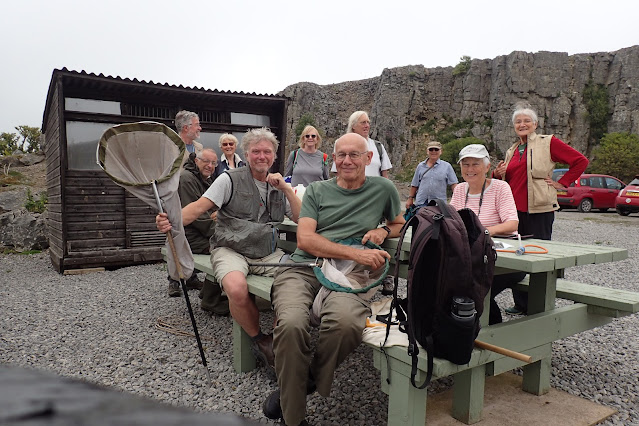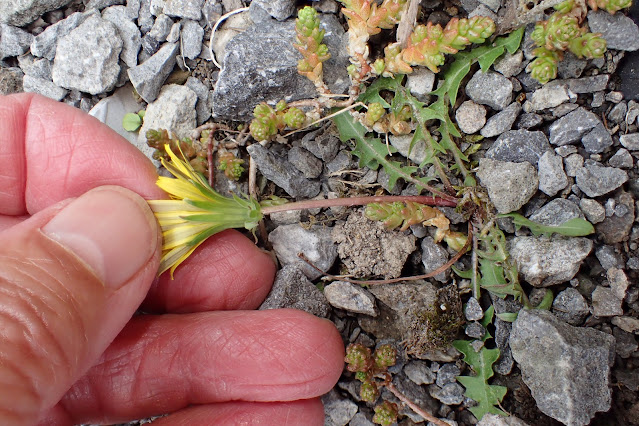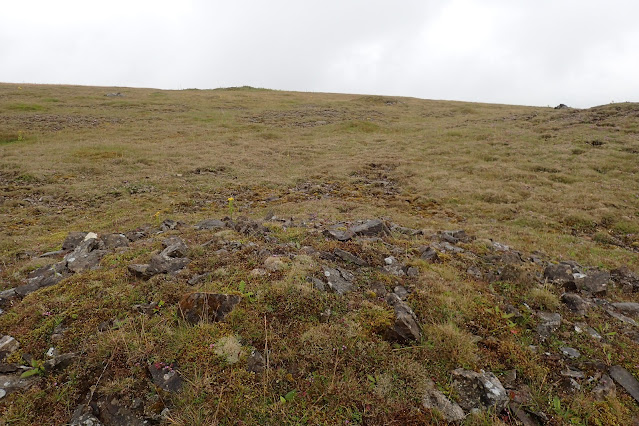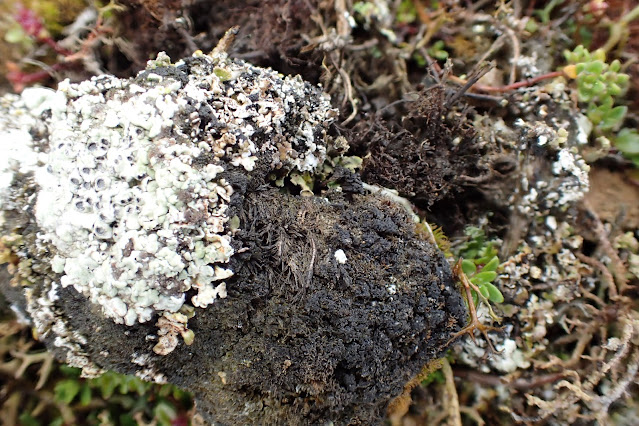Climate Walks happen on the 1st of each month.
1 Aug 2025 - Yorkshire Day. six of us made a repeat visit to Malham Tarn Fen.
A new plant not seen there before. Nettle-leaved Bellflower (and I have a list of 400 plants I have seen on the Malham Tarn Estate)
Three species of flowers in excellent condition: Bladderwort, Sawwort, Mare's-tail,
We set off from the car park. Could I encourage my friends to find and remember a lichen each, a moss each, a fern each, a grass each? (i.e. a total of five for each group)?. Angela wrote down all the plants we found. So many just on the road and track before we reached the fen.
Trees are so important for mosses in giving shade to walls - But if trees are too dense then very little can grow under them
The mature trees, (even if they are sycamore and beech), on the narrow sliver of land between the old dry stone- walled road (the track) and the current tarmac road "By pass (See link to old map)" also with drystone wall on one side, provide shade, enabling mosses to grow luxuriantly on the wall tops. - It is the combination of trees and light that allows this
We noticed Giant Bellflower (Campanula latifolia) with its huge, very pale-blue bell flowers and simple leaves on the main roadside and one plant on the trackside.
Once through the gate and onto the fen (but still next to the gate) Muff noticed a deeper blue bellflower that looked wrong..
because it was not a Giant Bellflower. It was Nettle-Leaved Bellflower (Campanula trachelium).. It had nettle-shaped leaves and hairs inside the corolla tube. I have never seen this recorded here before. Actually I am not sure I have ever seen it before (but may have bypassed it in someone's garden)
It was so beautiful that I actually came back up the next day when the sun was shining to take a better picture.
This does grow wild, especially further south.. but it also grows as a garden escape. I wonder where this one came from?
Once onto the boards we turned left and came to what I call the Paul Holmes Pool. Paul Holmes was the first warden at the Field Centre (which closed three years ago), and arranged for a section of this pool to be cleared every two years, otherwise it would all fill in with vegetation then peat, by a process of succession. The open water areas allow Bladderwort to grow, an aquatic plant with divided leaves that have 2mm long bladders/ jugs with lids on them. The lids flick open when microscopic water animals swim past and the animals are sucked in - food for the Bladderwort. See useful
You can see the green divided leaves submerged in the water all year, but it is only in August - and then only some years when the water table is low -that you can see the beautiful snapdragon like flowers.
 |
| The divided leaves have "bladders/jugs" to catch microscopic life |
 |
| Bladderwort |
 |
| Water horse-tail on left, Hippuris vulgaris on right. Horsetail is an ancient plant, it has cones, not flowers, and its relatives lived at the time of the dinosaurs. The Mare's-tail has tiny flowers |
 |
| See the tiny flowers in the axils of the leaves. |
 |
| August is the best time for Grass of Parnassus |
 |
| The stream today this year is completely full of Water Starwort Callitriche stagnalis |
 |
| Lesser Stitchwort Stellaria graminea looking, oh, so delicate. |
 |
| Angelica, Meadowsweet and Devil's-bit Scabious - but Oh, dear, the Reeds are continuing to increase and take over. (Shirley's picture) |
Must remember this date - 1st of August.
Some of the issues raised:
USA and Europe reaching record breakin temperatures this year because of heat does;









































































